GensoKishi is the blockchain gaming iteration of the traditional videogame, Elemental Knights Online.
The Rise of GameFi
It is easy for those of us who follow the GameFi and Metaverse spaces closely to feel that we are late to the party. Axie Infinity’s AXS token has provided early investors with a roughly 4,000% return on investment from June to all-time highs of around $160 in early November.
Meanwhile, the Metaverse took centre stage in late 2021, supercharged by Facebook’s rebranding and projects like The Sandbox and Decentraland squeezing out as many high-profile partnerships as possible.
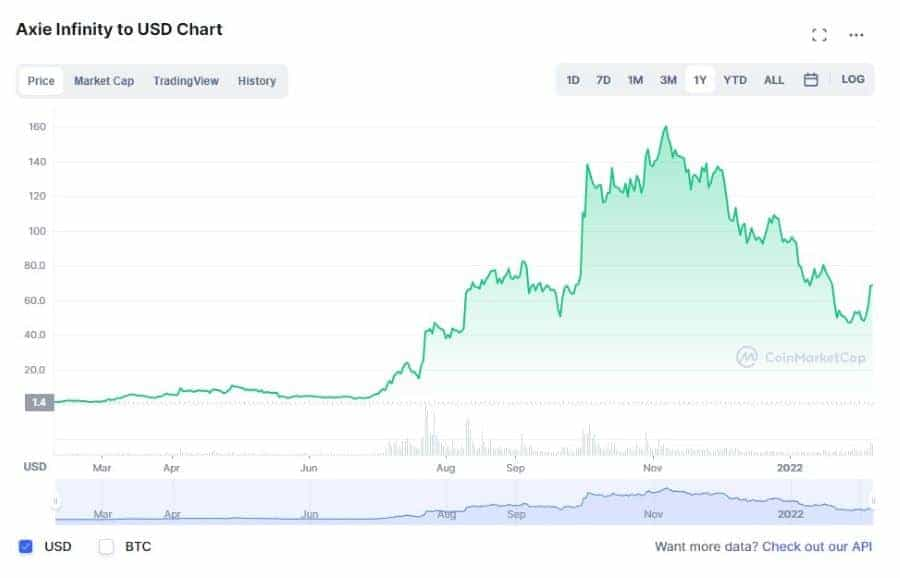
However, the reality is that the overlap between video games, social interaction and blockchain is in its infancy and anybody involved deeply, at this point in time, is well ahead of the curb.
To me, this thesis was ratified by an article published on Bloomberg on 15th January 2021.
The article, titled ‘Why GameFi Is Crypto’s Hot New Thing (and What Is It?)’, signalled a tipping point in the GameFi/Metaverse lifecycle wherein traditional mainstream financial media begin to acknowledge its potential and, thereby, fuel it with TradFi credibility.
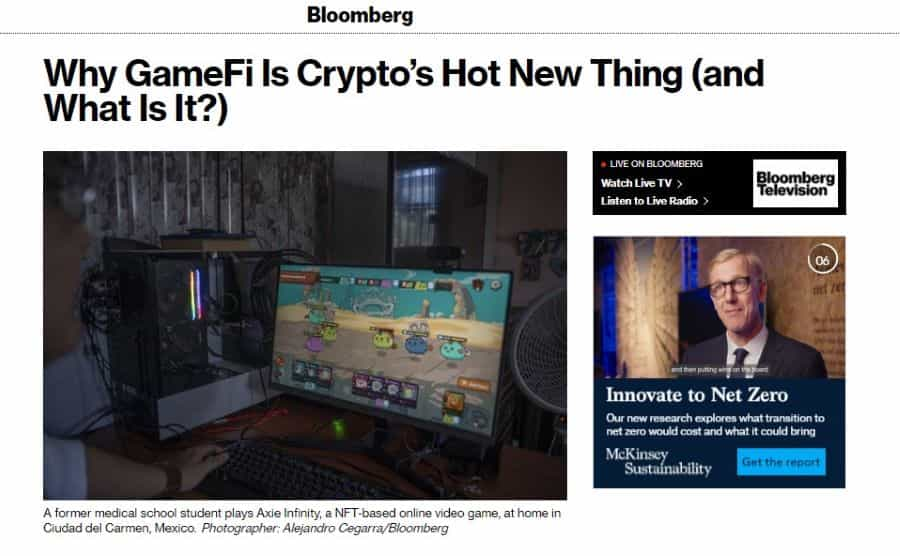
The piece was nothing more than a surface-level introduction to this new phenomenon that touched somewhat on the rise of Axie Infinity (the world’s most prolific play-to-earn game). However, in my mind, it illustrated two key tenets of the GameFi doctrine:
- Firstly, GameFi had reached critical mass. (Consider the boom experienced by the wider cryptocurrency market once institutional interest was peaked)
- Secondly, those involved in the crossover between traditional gaming and cryptocurrency were some of the earliest adopters. (GameFi is only now bridging the gap between specific crypto-oriented and mainstream media)
The Traditional Gaming Methodology and its Failings
With gains incomparable to any traditional market, attention is shifting to cryptocurrency and blockchain across a range of industries.
With the size of the video game industry being measured in the hundreds of billions and exponential growth expected for the coming years, it is no surprise that traditional gaming franchises are looking for a blockchain-shaped facelift.
In standard games, players regularly use in-game currencies (think COD Points in Activision’s Call of Duty or Robucks in Roblox) and use unique items and avatars that they can ‘level-up’ or even use to trade with; some have in-game significance, and some are purely cosmetic. Some cosmetic items can even provide an in-game advantage, as with the ‘Roze’ skin in ‘Call of Duty: Warzone’, wherein players are rendered difficult to identify in-game by the skin’s dark motif.
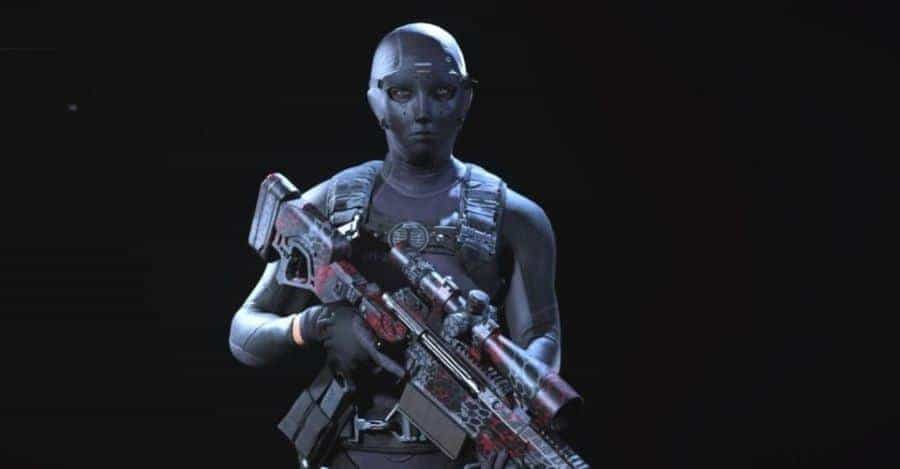
These are all phenomena that cryptocurrency and NFTs are well equipped to accommodate and improve upon. In the future, it will be possible to exchange your hard-earned in-game currency for real-world value and even own, trade and sell weapons, skins, avatars and vehicles if minted as non-fungible tokens.
The fundamental reasoning behind the pursuit of blockchain integration is sound. That said, franchises, brands and projects have, for the most part, failed to implement effectively…
Ubisoft
In late 2021, Ubisoft (of Assassin’s Creed fame) announced the incorporation of NFTs into its business model and game mechanics.
Ubisoft’s project, Quartz, was met with abject hostility from their existing gamer base. The top comment that slammed the announcement even received more likes than the introductory video.
One commenter had the following to say:
“To me, this is a blatant signal that you’re just milking the Ghost Recon franchise for literally every cent while putting in minimal effort into the actual game itself. Not playing a GR game in the future if there’s this level of degeneracy in the team”.
GameStop & Immutable X ($IMX)
Similarly, when traditional video game retailer, GameStop, announced a partnership with layer 2 Ethereum NFT-oriented scaling network Immutable X, pundits were not all happy.
Reinvigorated and saved by anti-institutional Redditors back in 2021, GameStop announced that their upcoming NFT marketplace would be built on IMX. However, despite this presenting a positive alternative to the gas-fee issues when using a platform like OpenSea, the community had very few kind words to offer.
According to one Tweet:
“Wow, you guys will really do anything to stay in business, including investing heavily into a fad.”
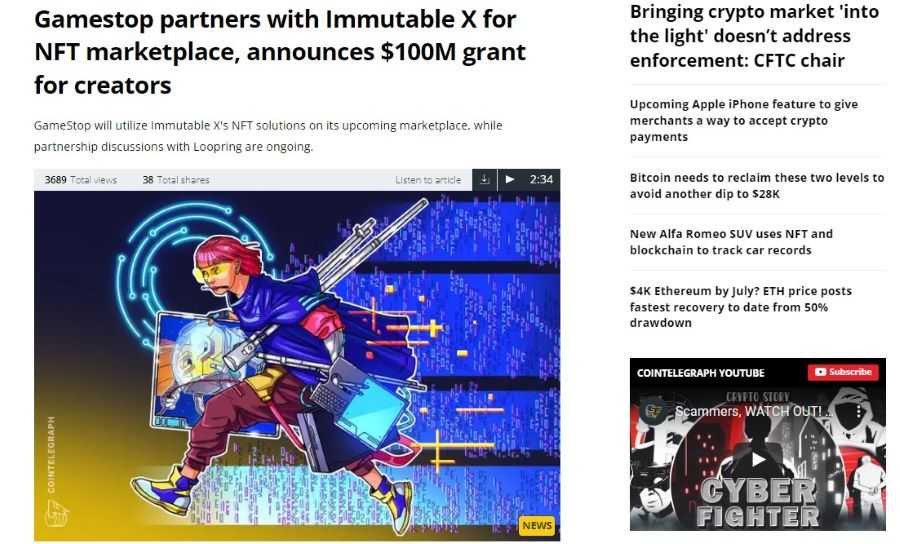
The problem in the above two cases is that blockchain gaming's target market falls broadly into two primary categories:
- Cryptocurrency advocates are desperate to see mainstream adoption and implementation of the blockchain.
- Traditional lifelong gamers with little-to-no understanding or interest in cryptocurrency and blockchain (perhaps even cynicism).
The mistake is made when a franchise or project attempts to accommodate both simultaneously.
To demographic 1, Ubisoft's announcement was fantastic news that signalled the start of crypto-oriented gaming going mainstream.
However, to demographic 2, the announcement was a shameless money grab from big institutions trying to force the merits of GameFi and NFTs down their throats. Naturally, this wasn't helped when a spokesperson for Ubisoft suggested that customers just "don't get" NFTs…
Therefore, the question remains, ‘How can both groups of users be appeased?’
The GensoKishi Methodology
The answer is surprisingly simple but has been overlooked by the vast majority of gaming franchises headed in the blockchain direction.
One very straightforward answer is to simply 'make another game'. Bring the expertise and resources of traditional video game companies and implement blockchain via a distinct vehicle. This way, game developers can capitalise on the rise of GameFi without forcing those resistant to crypto down the same path.
Naturally, this is not as straightforward as it sounds. A successful project launch requires a serious degree of funding, experience, and vision. GensoKishi has done just that…
GensoKishi vs Elemental Knights Online
Elemental Knights Online, or EKO, is an MMORPG played in real-time. Developed by Tokyo-based game development company, Winlight, Elemental Knights is available on iPhone, Android, Nintendo Switch and even PlayStation 4. According to Winlight's homepage, EKO has a user base of 500,000 gamers.
In the early 2010s, Elemental Knights secured the "Game Star Award of Taiwan" and achieved a total of 8 million downloads. This is particularly impressive given that it occurred in the early days of the mobile-gaming boom that we've witnessed throughout the last decade. Clash of Clans, developed by Supercell, has surpassed 500 million downloads and generated more than $1 billion in annual revenue.
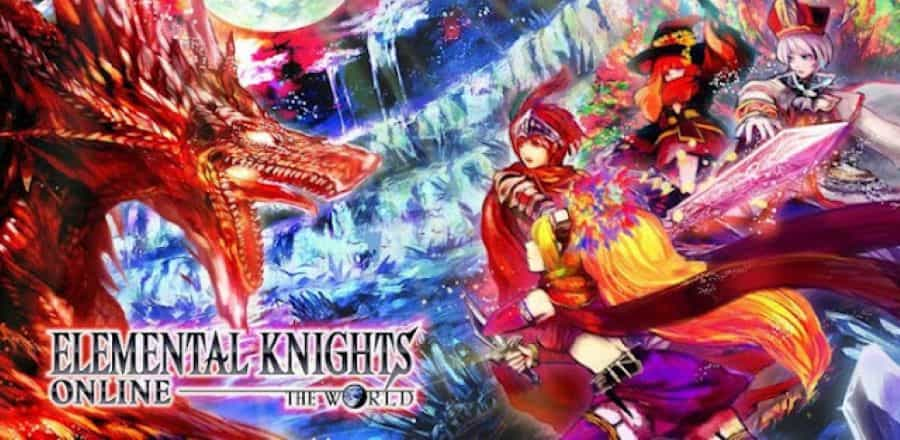
GensoKishi online is taking all that success and bringing it to the blockchain…
By establishing a new project and even appointing a separate CEO, in the form of Maxi Kuan, GensoKishi is employing an altogether different strategy to most traditional game development studios that pacifies some of the issues faced by the likes of Ubisoft and GameStop.
GensoKishi Metaverse
The team behind GensoKishi is well qualified. The CEO, Maxi Kuan, has been “working in Japan (Tokyo) for 10 years and running a consulting business for startups for 5 years. Since 2017 [Maxi has been] in the blockchain industry as a senior consultant for blockchain media” and has strong connections in the game-development sector.
Similarly, Hayate, GensoKishi’s Head of Global Communications, has worked in blockchain startup incubation since 2018 and oversees “one of Japan’s biggest NFT marketplaces, Rakuza, right now”.
Together, the team envisages an entire Metaverse ecosystem incorporating its own native currencies ($MV and $ROND) and supported by an NFT based economy, bringing cutting edge technology to the gaming scene, all underscored by tried and tested game mechanics.
Within the GensoKishi metaverse, players will cooperate in defeating ‘boss-type’ enemy monsters, earn in-game items and go on thematic adventures. All this on top of the successful aesthetic and in-game mechanics that allowed its older cousin, Elemental Knights, to succeed.
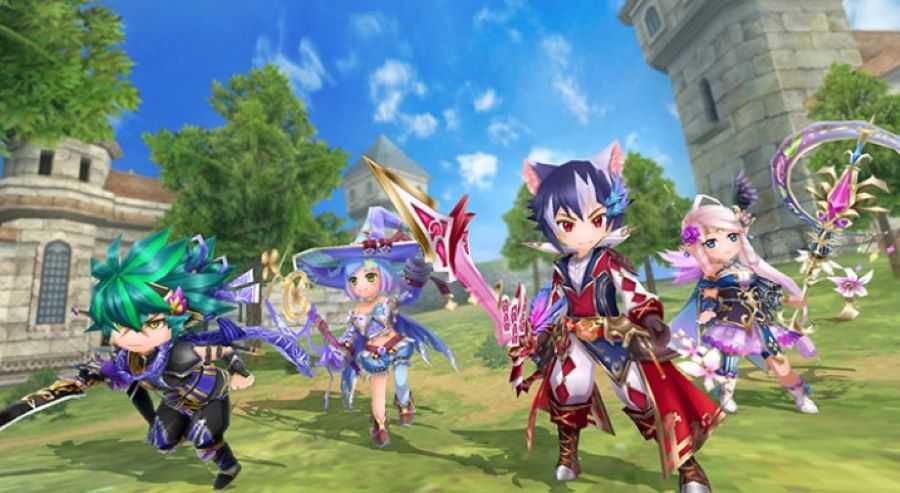
The latest development footage for the GensoKishi gameplay can be found on their homepage here.
What’s more, with a free-to-play element, no users will be priced out as they are with multiple pre-existing Metaverse/GameFi ecosystems.
However, GensoKishi becomes especially exciting when we consider the in-game NFTs – and they certainly have big plans here…
GensoKishi intends to become a ‘fully formed metaverse’. By this, I mean they are looking to use a virtual real estate system (perhaps the most revolutionary aspect of metaverses), with land plots being minted as NFTs. Ownership of said land will allow owners to construct their own worlds and maps and even develop their own monsters to be combatted within the GensoKishi ecosystem, with decisions on traits and aesthetics left to the designers.
Moreover, owners of GensoKishi land will receive revenue as other players use the plot for adventures and various other activities.
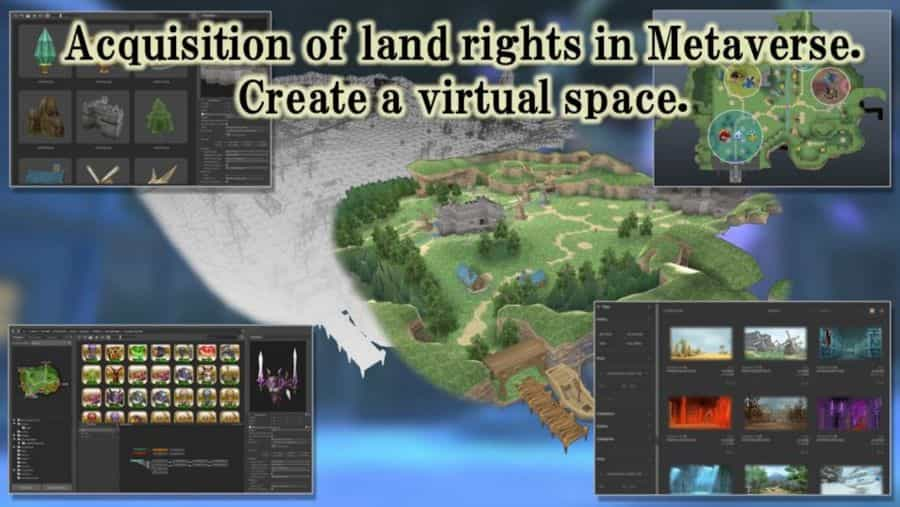
In this respect, GensoKishi allows for an impressively high degree of agency. Something essential when it comes to player retention in the long term.
In addition to this, just about every ownable item within the metaverse will be tokenized as an NFT. This goes for weapons, equipment, fashion items and much more.
This will be supported by in-game marketplaces and be available on traditional NFT marketplaces.
Several items have already been listed on the world’s most prolific NFT marketplace, Opensea, including various clothing items, weapons and equipment pieces.
Incorporating NFTs, gamification and metaverses, GensoKishi is addressing some of the hottest topics in cryptocurrency right now.
In a recent AMA, the team highlighted the importance of “providing so much freedom for [their] users” – a key tenet of the GensoKishi thesis and one we can see manifested in the degree of agency afforded to players.
With “multiple worlds and continents where they can explore”, players should be especially excited by the range of ‘user-generated content’ afforded to the metaverse. According to the team, “Users can generate their own character/weapon/rare items/monsters and can use it to play in-game or make it valuable and sell it on the NFT market. They can also make their whole entire world where users can come in and explore”.
I see providing players with real freedom in-game as an effective method of manufacturing a strong and loyal gaming community, so it comes as no surprise to me that GensoKishi has done just that.
GensoKishi’s roadmap is equally exciting. With upcoming NFT giveaways, coupled with an eventual transition to DAO governance and, of course, full metaverse rollout, the future could be very bright indeed for GensoKishi.
The excitement around GensoKishi is reflected in its growing community. At the time of writing, their Twitter has a fellowship of 63,000 fully engaged audience members and their Discord hosts a full 40,000. Some very impressive figures for a project whose native currency is just two weeks old.
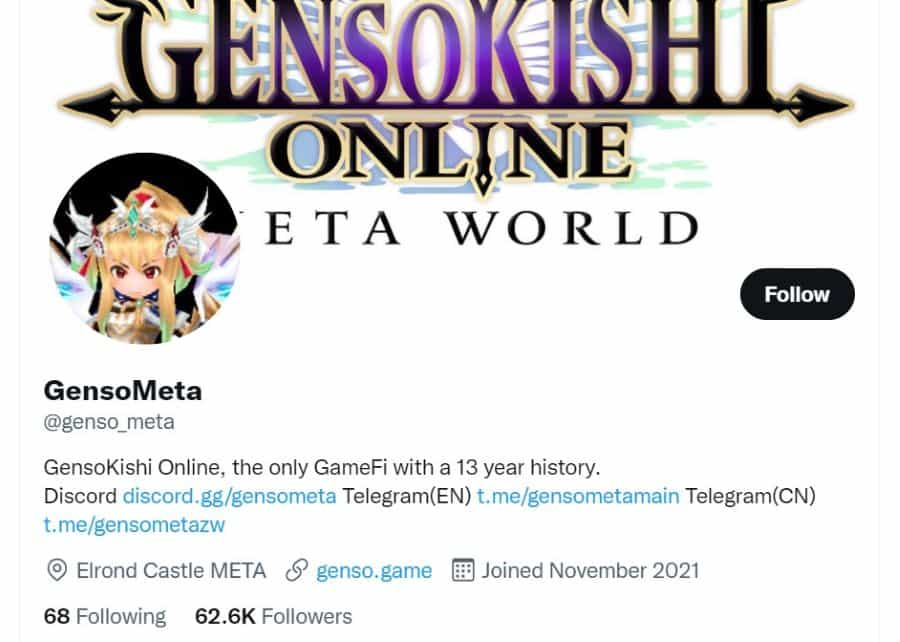
GensoKishi has drawn the eye of top cryptocurrency influencers and even featured on Lark Davis' YouTube channel, which boasts a subscribership of nearly half a million viewers.
GensoKishi Native Tokens ($MV and $ROND)
GensoKishi has two associated tokens, ROND and MV (Polygon, ERC20), each fulfilling a different purpose. The ecosystem itself is built on Ethereum layer two scaling solution, Polygon. According to the team, this is due to the low gas fees, player-base, and even the integration support they have received from the Polygon team.
ROND Token
ROND acts, effectively, as the metaverse's native stablecoin. It will be available via DEX listings and can also be earned by selling in-game items to non-player characters (NPCs) and internal GensoKishi weapon and items shops.
It can be used to purchase items and weapons, upgrade your own NFT equipment, fund expedited in-game travel, pay fees to accept quests and more.
MV Token
More exciting, however, is MV, which is described in their whitepaper as the "most important token of the game".
Entirely separate from ROND, MV has important in-game functionality, allowing holders to buy in-game items at discounted prices and cover internal trading fees.
However, depending on holdings, MV provides voting rights for deciding future game policy, providing a community-driven incentive for the token.
What's more, holders can use their MV to "create lands, monsters and non-player characters".
One further exciting use-case to the token is the recent staking feature, which is already functional on GensoKishi's website, allowing holders to earn daily rewards from their MV positions.
GensoKishi So Far
It would be an understatement to say that GensoKishi and its MV token have had a strong start to their life in cryptocurrency.
Having launched on January 18th on a well-known launchpad, TrustPad, Genso's MV was born into as adverse a market sentiment possible. All price action has manifested when top cryptocurrencies by market cap were experiencing aggressive price suppression.
MV received its first USDT pairing on tier 1 exchange, ByBit, on January 27th when BTC and ETH were sitting double-digit percentages below all-time highs.
Even before listing, MV set records. GensoKishi became the most participated in a project of all time in ByBit's launchpool with more than 65,000 participants and upward of $200 million in TVL.
After that, post listing, MV has delivered those lucky enough to participate in their Trustpad IDO with profits of nearly 9,000%, recently soaring to all-time highs of around $1.66 in recent days. This amounts to roughly 87x from its IDO price of $0.019.
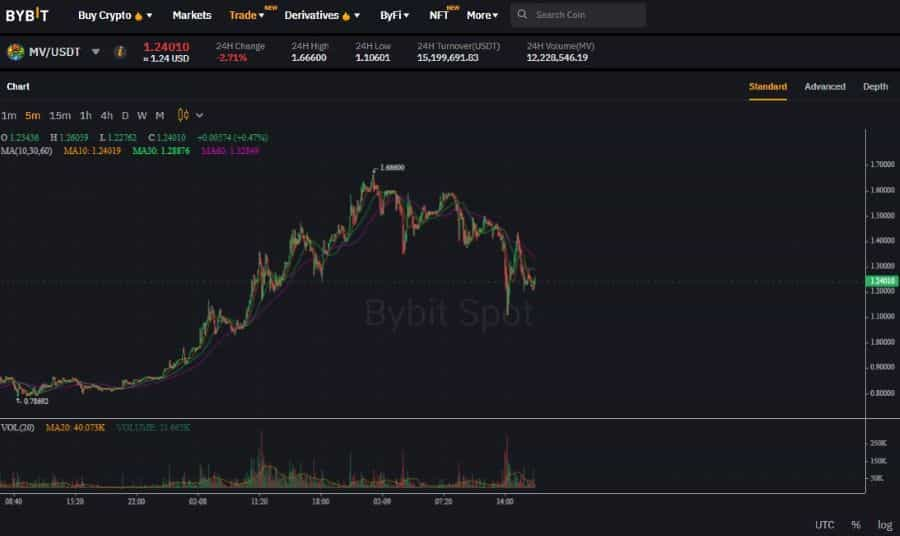
In addition, at points, MV was even afforded a higher daily trading volume than Ethereum on ByBit on certain days.
According to GensoKishi CEO Maxi Kuan, the team is “happy with the performance, but we are still standing at the starting stage”. They are certainly expecting big things in the future and are hugely excited about “the metaverse x DAO fantasy world on GensoKishi”, which uses the “MV token for creating/enjoying everything [users] could imagine and make it come true”.
MV is off to a very bullish start and, though it is practically impossible to accurately predict the performance of recently established tokens, especially those in emerging sectors such as GameFi and Metaverses, the team behind the project has the resources to maintain GensoKishi’s status as a very exciting project indeed.
Conclusion
Now, I must conclude by disclaiming that I have chosen to personally invest GensoKishi’s MV token. Though none of what I write is financial advice, I would hope that the rationale I used in my decision to invest is clear on the above account.
At a time where countless new GameFi and Metaverse projects are emerging from the woodwork, the importance of identifying projects that will stand the test of time, as opposed to simply riding the GameFi wave for short term returns, is at an all-time high.
To me, GensoKishi has a solid chance of seeing long term success. Its community is strong, its developers are well qualified and well connected, and the game mechanics utilize a successful pre-existing franchise.
Their MV token has performed with unprecedented strength so far, and there is no lack of exciting developments on the horizon for GensoKishi.
I certainly look forward to witnessing the project develop and reach its future milestones.
Disclaimer: These are the writer’s opinions and should not be considered investment advice. Readers should do their own research.


